Aluminum has many excellent properties, it is the perfect material for structural fenestration system in most ways. But aluminum is also a highly heat conductive material that will rapidly transfer exterior climatic temperature. So people create thermal break system to reduce the heat conduction.
At present, there are two types of materials that are most commonly used in thermal break system:
For polyurethane pour & debridge system, a channel is designed into the aluminum profiles and filled by liquid polyurethane. Then remove the metal bridge from the bottom of the channel to let the hardened polyurethane to act as an insulator. (as show in Figure 1 and Figure 2)
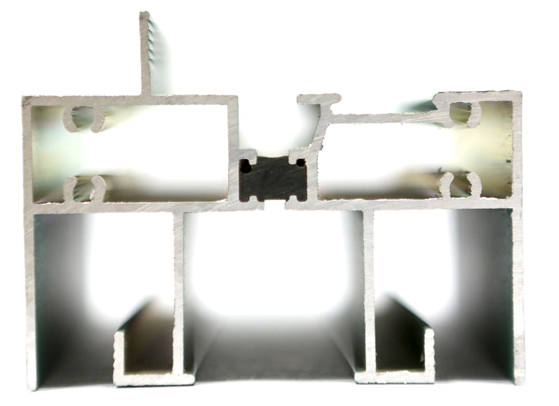 |
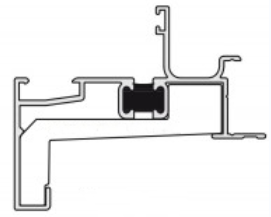 |
| Figure 1 polyurethane pour & debridge thermal break system | Figure 2 polyurethane pour & debridge thermal break system |
For polyamide thermal break strip system, a polyamide strip is mechanically inserted between two aluminum profiles. The polyamide strip is the insulator. (as show in Figure 3 and Figure 4 )
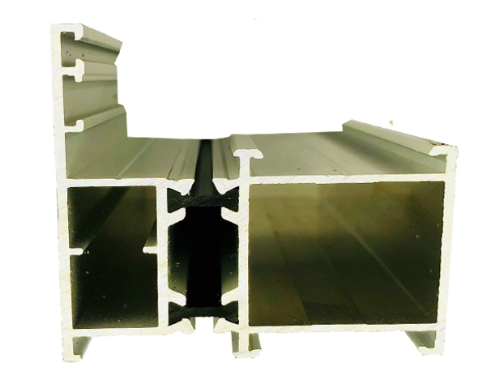 |
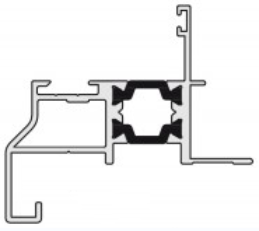 |
| Figure 3 polyamide strip thermal break system | Figure 4 polyamide strip thermal break system |
Today, we are going to talk about the insertion process required in the thermal break aluminum profiles. Because in addition to the quality of the polyamide strip itself, the technical level of the insertion processing is an important factor to determine the quality of the thermal break aluminum profiles.
Generally speaking, the insertion process is completed by four steps:
Profile knurling
Strip insertion
Crimping
Shear strength test
First step: Profile Knurling
Profile knurling is to roll out “teeth” on the part of the aluminum profile that needs to insert polyamide strips.(as show in Figure 5 and Figure 6)
The purpose of knurling is to increase the roughness of the profile, so it can improve the shear strength force of the composite aluminum profile. Profile knurling is a particularly crucial process.
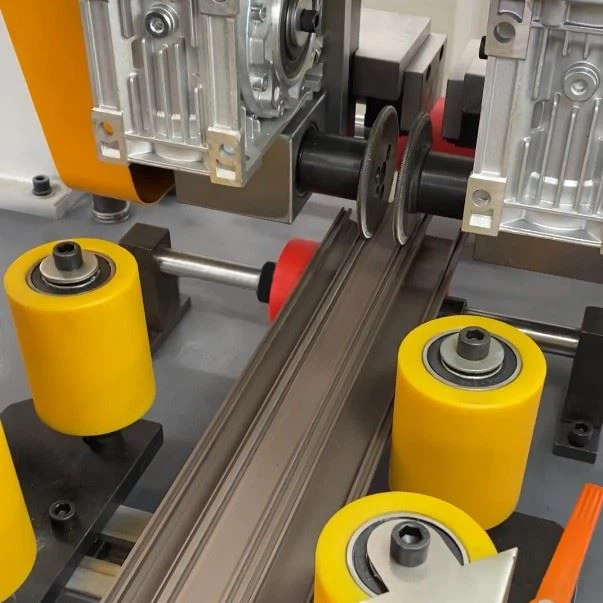 |
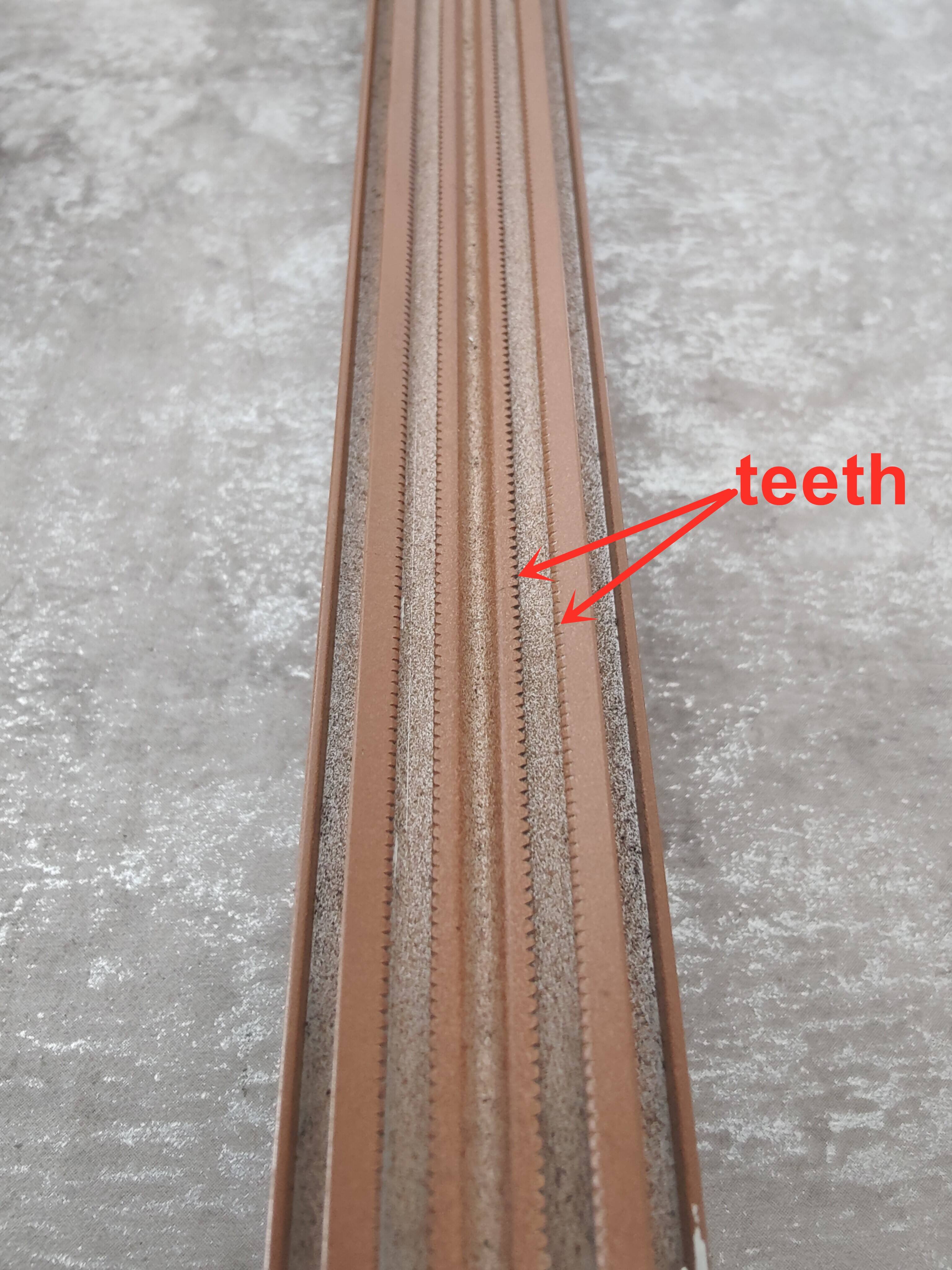 |
| Figure 5 profile knurling | Figure 6 teeth on aluminum profile |
The polyamide strip is inserted into the upper and lower aluminum notches through the guide rail of the strip insertion machine, so that they can be connected together.(as show in Figure 7) The insertion process of some equipment is integrated in knurling machine, that is, the polyamide strip is inserted into the aluminum profiles in the process of profile knurling. After insertion, the polyamide strip and the aluminum profiles are not tightly bonded. They are loose. Strips and aluminum profiles can move with each other.
For those aluminum profiles whose two notches center distance is less than 10mm(as show in Figure 8), it is difficult to insert polyamide strips by strip inserting machine. In this case, we can only insert polyamide strips by manual.
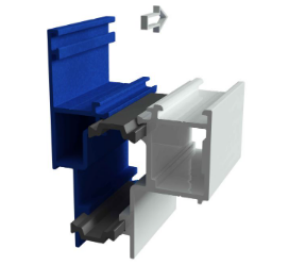 |
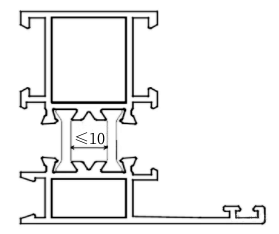 |
| Figure 7 strip insertion |
Figure 8 the distance of two notches center is less than 10mm |
Crimping is pressing of aluminum profiles and thermal break strips using three sets of hard rolling wheels. Three sets of rolling wheels are used for preloading, compressing, and correcting respectively. (as show in Figure 9 and 10)
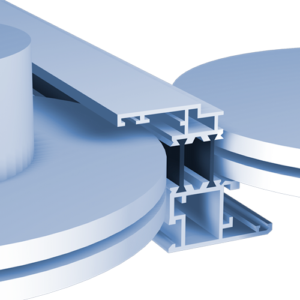 |
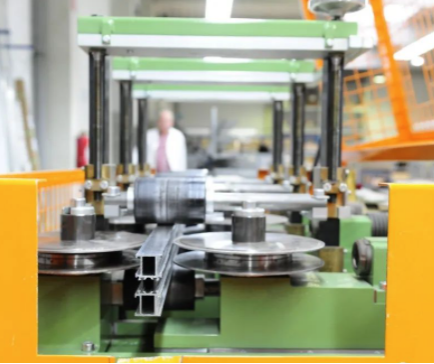 |
| Figure 9 crimping | Figure 10 crimping |
The testing step is very easy. Apply increasing forces to the profile longitudinally until misalignment occurs between the aluminium profile and the thermal break strip.(as show in Figure 11 and Figure 12)
In addition, this test is not a one-time test. We have to test 10 samples of 100mm. During the process, it should be noted that the upper and lower clamping blocks cannot be pinched onto thermal break strips. The aim to test the shear strength is to test the strength of the combination of thermal break strips and aluminum profiles. Chinese National standard stipulates that the characteristic value of longitudinal shear strength of thermal break aluminum profile should be greater than 24N/mm.
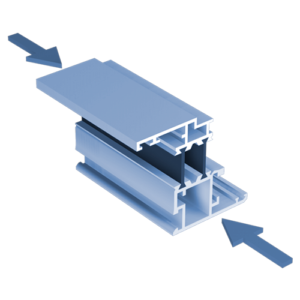 |
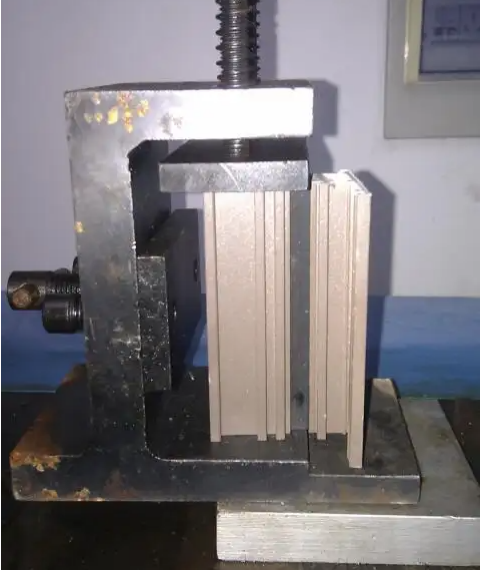 |
| Figure 11 shear strength test | Figure 12 shear strength test |
 Hot News
Hot News